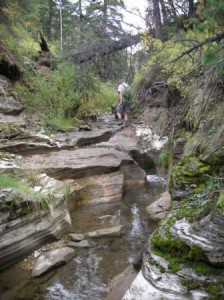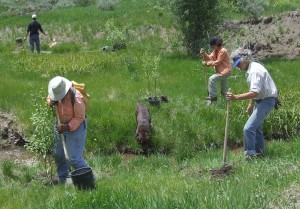Colorado Trout Unlimited is happy to say that the River Explorers program at the Mapleton School District in Thornton will be continuing into its second school year. This will be the beginning of the program’s vertical alignment in which students have different experiences in sequential years centered around healthy watersheds, in this case the South Platte, and fishing. We will also be bringing the program to the Adams-12 district for its first year in that district. As the years go by, we hope that this approach will be an ongoing success showing the value of consistent and stepwise programming to outdoor education. Students who are “River Explorers” will see four years of new activities. One step on the path is Trout in the Classroom. State-wide this year, Colorado Trout Unlimited and its chapters are sponsoring eleven tanks in which students raise trout from eggs to be released into the wild when they grow large enough in the spring. All classrooms have now received their eggs, and many have actively swimming and feeding fry.
River Watch is another piece of the River Explorers curriculum. As its own nonprofit, River Watch utilizes citizen science through school groups and volunteer organizations to collect and formulate water quality data from across the state. Colorado Trout Unlimited works with River Watch to host a few sites through partnering schools and local chapters. As a part of the River Explorers, students will become intimately familiar with the local water quality on the South Platte, and through River Watch provide that data to the public for anyone to use. This real world applicability is something CTU is proud to bring to the South Platte River Explorers, and we think the addition of two new monitoring sites is an exciting undertaking.
Rounding out the River Explorers experience are two more years of programming: Stream Explorers, the introductory portion hosted at the middle school level, in which students learn the basics of a watershed, stream ecology, and fishing; and National Fishing in Schools Program where they hone their fly fishing skills. Connecting all of these pieces together we hope will foster students’ love of the outdoors, of fishing, and ultimately the desire to protect the places and resources they connect with. With generous support from local sponsors, Colorado Trout Unlimited is thrilled to be educating the next generation of river stewards through the continuation of River Explorers in the Mapleton School District, and the expansion to Adams-12 district.

















